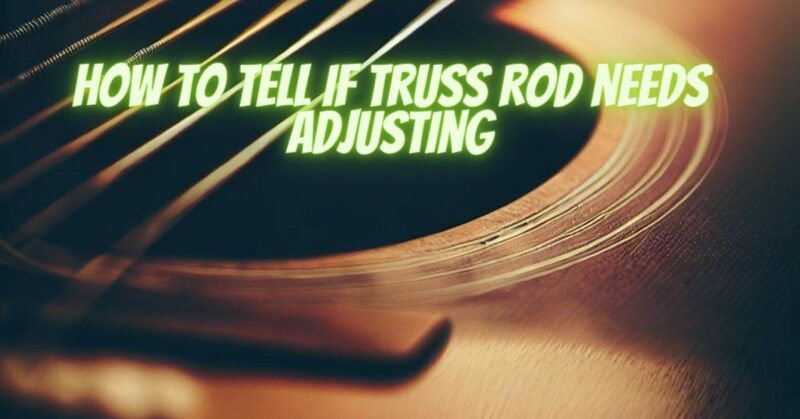The truss rod is a crucial component of a guitar’s neck that helps maintain proper relief and playability. Over time, changes in humidity, string tension, and other factors can cause the neck to develop issues that may require truss rod adjustment. In this article, we will discuss some common signs that indicate your guitar’s truss rod may need adjusting, helping you identify when it’s time to make the necessary adjustments.
- High or Low Action: If you notice that the action (string height) on your guitar is too high or too low, it could be an indication that the truss rod needs adjusting. High action can make the strings feel difficult to press down, resulting in discomfort and potential intonation issues. Conversely, low action may cause buzzing or fretting out on certain frets.
- String Buzz: Excessive string buzz, especially when playing open strings or lower frets, can be a sign of an improperly adjusted truss rod. This occurs when the neck has insufficient relief or excessive backbow, causing the strings to come into contact with the frets. String buzz is more noticeable when playing with light to moderate finger pressure.
- Fretting Issues: If you experience problems with fretting out or choking on specific frets, especially in the middle or upper regions of the neck, it could indicate an uneven or improperly adjusted truss rod. The neck’s curvature may be causing the strings to come into contact with higher frets, impeding playability.
- Bow or Backbow: Visually inspect the neck of your guitar by looking down the fingerboard from the headstock toward the body. A slight bow, known as relief, is usually desirable and ensures proper string clearance. However, if you observe excessive bowing (forward curve) or backbow (reverse curve), it suggests that the truss rod may need adjustment.
- Changes in Weather or Climate: Environmental changes, particularly in temperature and humidity, can affect the neck’s relief and require truss rod adjustment. If you notice significant shifts in weather conditions or travel with your guitar to different regions, it’s important to monitor the neck’s response and be aware of any related issues.
- Intonation Problems: Intonation refers to the accuracy of each note on the fretboard. If you notice persistent intonation problems, such as certain fretted notes sounding out of tune even after proper tuning, it could be an indication of an improperly adjusted truss rod affecting the overall neck geometry and string action.
- Uneven Fret Wear: Uneven fret wear, where certain frets show more wear than others, can be a result of an improperly adjusted truss rod. If the neck’s relief is inconsistent, it can cause uneven string pressure on the frets, leading to accelerated wear on specific areas of the fingerboard.
Conclusion:
Understanding the signs that indicate your guitar’s truss rod needs adjusting is essential for maintaining optimal playability. If you notice high or low action, string buzz, fretting issues, bow or backbow, changes in weather or climate affecting the neck, intonation problems, or uneven fret wear, it’s likely time to make truss rod adjustments. However, it’s important to exercise caution and, if unsure, seek assistance from a professional guitar technician who can make precise adjustments to ensure the best possible playability and performance of your instrument.


